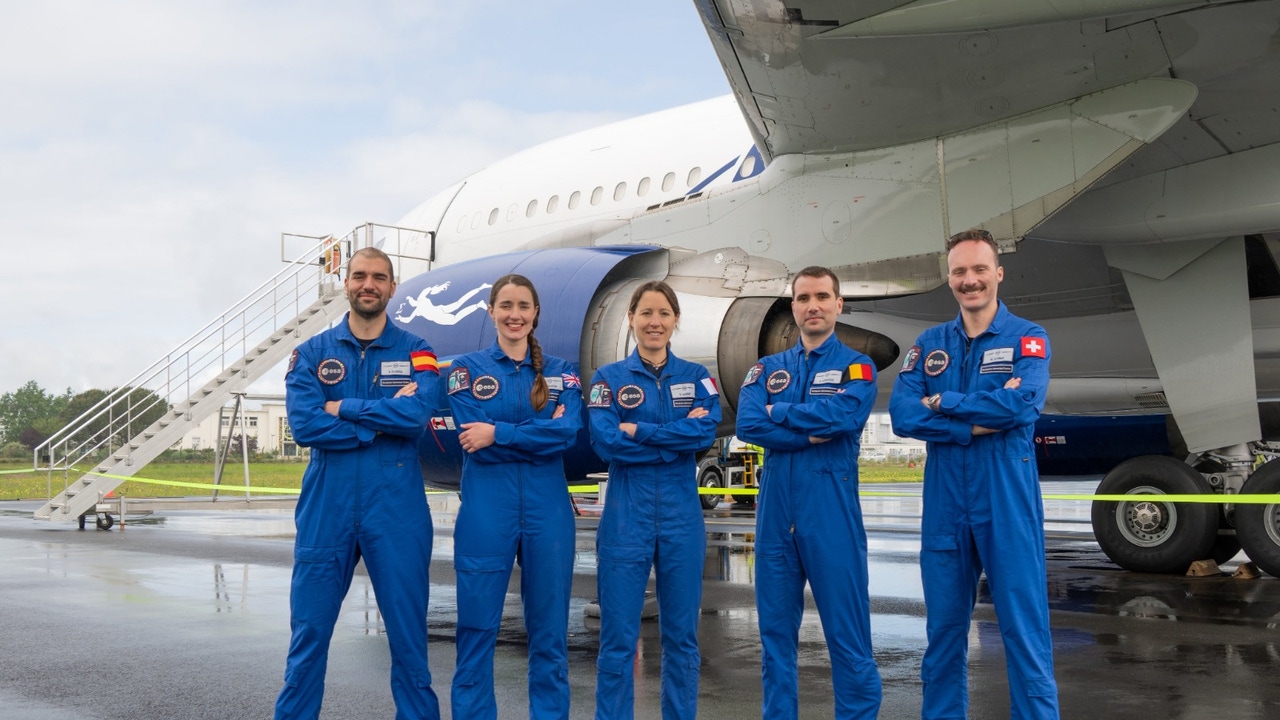The aeronautical engineer Pablo Alvarezgraduated this Monday European Astronaut Center of the European Space Agency (ESA) after one year Training at the highest leveland thus becomes third Spanish astronaut to travel on a mission into space after the Spanish-Americans Miguel López-Alegría and Pedro Duque. Pablo Alvarez (1988), a native of León, is an aerospace engineer. It started in April 2023 one-year basic training at the European Astronaut Center in Cologne after being selected from more than 22,500 candidates from ESA member states in November 2022.
“I remember when I wanted to be an astronaut. When I was four or five years old, I looked at the moon. In my small town in the mountains of Spain, someone told me that there had been people who had walked on the moon, but I was disappointed to hear that only twelve people had done it and I thought it must be something more ordinary.” Álvarez remembers. That was him moment when the Spaniard realized that he really wanted to become an astronaut. However, over time, he stopped thinking about it because he believed that “it couldn’t happen.”
“It only occurred to me again with the ESA selection I tried very hard to get it. “Today we are one step closer,” celebrated Álvarez on the occasion of his graduation. In his speech, the Spanish astronaut initially ruled out being considered for the missions Artemis, NASA’s lunar exploration program. “We are now focused on preparing a mission for the International Space Station (ISS), which is already quite challenging,” he said.
“Naturally We will be astronauts for several years, we plan to stay for a long time, so we’ll see what the future brings. But now we are focusing on the ISS,” Álvarez added. The Spanish astronaut was accompanied by the Minister of Science, Innovation and Universities, Diana Morant, at the graduation ceremony of his ESA year and a bilateral meeting with the Director General of the European Space Agency.
“Today is a significant milestone as we celebrate the graduation of a new class of five ESA astronauts who are now qualified for future spaceflights. “The addition of new talent and diverse perspectives and experiences enhances our ability to navigate the complexities of space exploration and consolidates ESA’s role as a pioneer in shaping our future in space,” said ESA Director General, Josef Aschbacher. “Basic astronaut training was an extraordinary journey of personal development. “I am deeply grateful for the invaluable lessons I have learned from the best in the industry and look forward to shaping the future of space exploration,” he said.
What do you study to become an astronaut?
In the first year of their training, astronaut candidates went through a training program Learn about space exploration, including technical and scientific skills, space systems and operations, and training such as spacewalks and survival training. He took part in the first weeks of his training Sessions to familiarize yourself with the ESAalong with scientific seminars and physical fitness assessments.
After completing their basic training, candidates become certified ESA astronauts and are ready to enter the next phase of space station training, called preparatory training. Once assigned to a mission, the mission-specific training which will be tailored to mission tasks, including practical training on ESA modules and technologies, as well as training with international partners.
The astronaut candidates join the current group of ESA astronauts actively involved in space missions and research projects. The first astronaut of Pablo Álvarez’s generation will fly into space Early 2026. Currently, the missions of the Spaniard and his companions to the International Space Station are planned and have an estimated duration of six months. Álvarez believes that the “most important thing” about these missions is “the scientific return,” he said A dream mission would be one where you could help “find the cure for an illness.” or improve the conditions of those who suffer,” and many of the experiments on the International Space Station “go in that direction.”
“A journey to space has multiple faces, as there is a technological and scientific part, one for dissemination and another for exploration and adventure. But nothing can beat the experience of seeing the Earth from space!” explained the Spanish astronaut in an interview with Europe Press.
